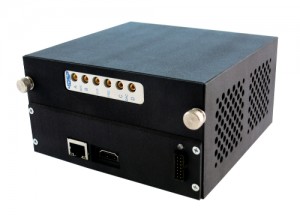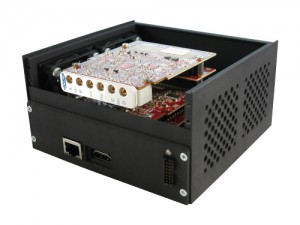4DSP’s FM788 Chosen by VITA as Featured Product

One of 4DSP’s newest products, the FM788, is featured in the Fall 2014 issue of OpenSystems Media’s VITA Technologies as a Primetime Choices product (see page 23 of the PDF version here.) Some of the other topics covered in this issue of the magazine include reliability prediction methods, interoperability of VITA 46.11, and chassis management for VPX systems.
With eight 16-bit A/D channels running up to 250Msps, the FM788 is an FPGA-based XMC module based on Xilinx’s Virtex-7. It offers unmatched performance for such applications as beamforming, direction finding, RADAR, and satellite communications. The FM788 has the largest channel count in this frequency range and the most available onboard memory for real-time buffering of large data vectors. The four 10Gbps optical transceivers on this module can be connected directly to remote storage with no CPU involvement.
4DSP CTO Pierrick Vulliez had this to say about the FM788, “This approach of offering a way to digitize multiple analog channels, perform signal processing using the Virtex-7 and offload data to a storage system using optical connections on a single card overcomes the inherent limitations of bussed architectures.”
4DSP continues to push the envelope by providing more cutting-edge products in the FMC and FPGA form factors. We recently announced the release of the FMC144 A/D-D/A module along with two variants, the FMC140 and FMC142. With four 16-bit A/D channels with speeds up to 370MSPS and four 16-bit D/A channels up to 2.5GSPS, the FMC144 delivers high-bandwidth connectivity for calculation-heavy FPGA-based applications including beamforming and direction finding. It is very well-suited for multi-antenna arrays used in the telecommunications industry where high performance is required.
More new FMC products are planned for release before the year is out. We will share details as they become available.


